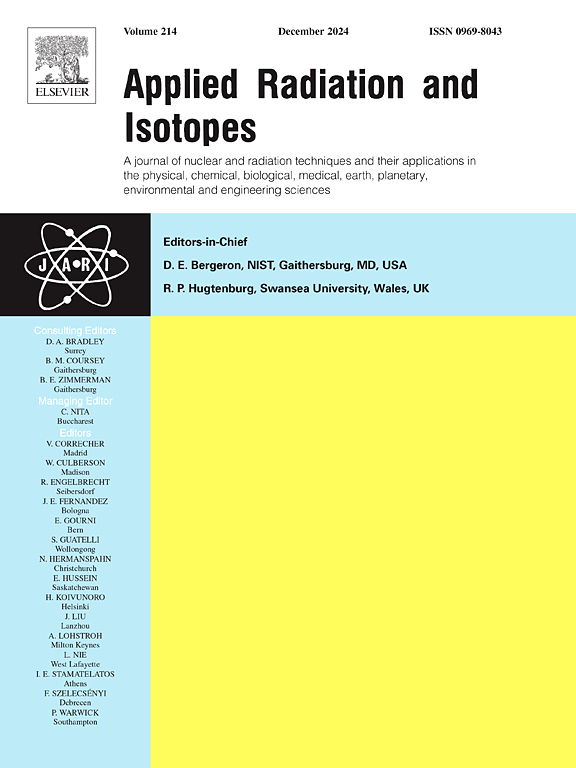Shielding design and heat transfer analysis of the transportation container of a hot batch in the 99Mo production facility
IF 1.6
3区 工程技术
Q3 CHEMISTRY, INORGANIC & NUCLEAR
引用次数: 0
Abstract
In molybdenum-99 (99Mo) production facilities via the fission method, appropriate transportation containers must be used to transfer irradiated targets from the irradiation facility to the processing facility, following the requirements for transferring radioactive materials. In the 99Mo production industrial plan of Iran, the transportation container must be capable of carrying a holster containing nine irradiated low-enriched uranium targets, known as a hot batch. In this article, the proper shielding of two-layer containers based on the gamma spectrum emitted from the radioisotope inventory of a local hot batch, including fission products, activation products, and other radioisotopes produced from their decay chains, was investigated by using Monte Carlo code MCNP6. The simulation results indicated that a two-part container including a moving part of depleted uranium with a thickness of 7 cm and a fixed part of lead with a thickness of 7.2 cm could be an appropriate choice for the local hot batch transport. Also, heat transfer analysis using ANSYS software showed that transporting the hot batch immersed in water inside the container improved thermal distribution.
99Mo生产装置热批运输容器屏蔽设计及传热分析
在裂变法钼-99 (99Mo)生产设施中,必须按照放射性物质转移的要求,使用适当的运输容器将辐照后的靶材从辐照设施转移到加工设施。在伊朗的99Mo生产工业计划中,运输容器必须能够携带一个装有9个辐照低浓缩铀目标的枪套,称为热批。本文利用蒙特卡罗代码MCNP6,研究了基于本地热批放射性同位素库存(包括裂变产物、活化产物和其他由其衰变链产生的放射性同位素)发射的伽马谱的双层容器的适当屏蔽。模拟结果表明,采用厚度为7 cm的贫铀移动部分和厚度为7.2 cm的铅固定部分组成的两部分容器可以作为局部热批输送的合适选择。利用ANSYS软件进行传热分析表明,将浸在水中的热批输送到容器内可以改善热分布。
本文章由计算机程序翻译,如有差异,请以英文原文为准。
求助全文
约1分钟内获得全文
求助全文
来源期刊

Applied Radiation and Isotopes
工程技术-核科学技术
CiteScore
3.00
自引率
12.50%
发文量
406
审稿时长
13.5 months
期刊介绍:
Applied Radiation and Isotopes provides a high quality medium for the publication of substantial, original and scientific and technological papers on the development and peaceful application of nuclear, radiation and radionuclide techniques in chemistry, physics, biochemistry, biology, medicine, security, engineering and in the earth, planetary and environmental sciences, all including dosimetry. Nuclear techniques are defined in the broadest sense and both experimental and theoretical papers are welcome. They include the development and use of α- and β-particles, X-rays and γ-rays, neutrons and other nuclear particles and radiations from all sources, including radionuclides, synchrotron sources, cyclotrons and reactors and from the natural environment.
The journal aims to publish papers with significance to an international audience, containing substantial novelty and scientific impact. The Editors reserve the rights to reject, with or without external review, papers that do not meet these criteria.
Papers dealing with radiation processing, i.e., where radiation is used to bring about a biological, chemical or physical change in a material, should be directed to our sister journal Radiation Physics and Chemistry.
 求助内容:
求助内容: 应助结果提醒方式:
应助结果提醒方式:


